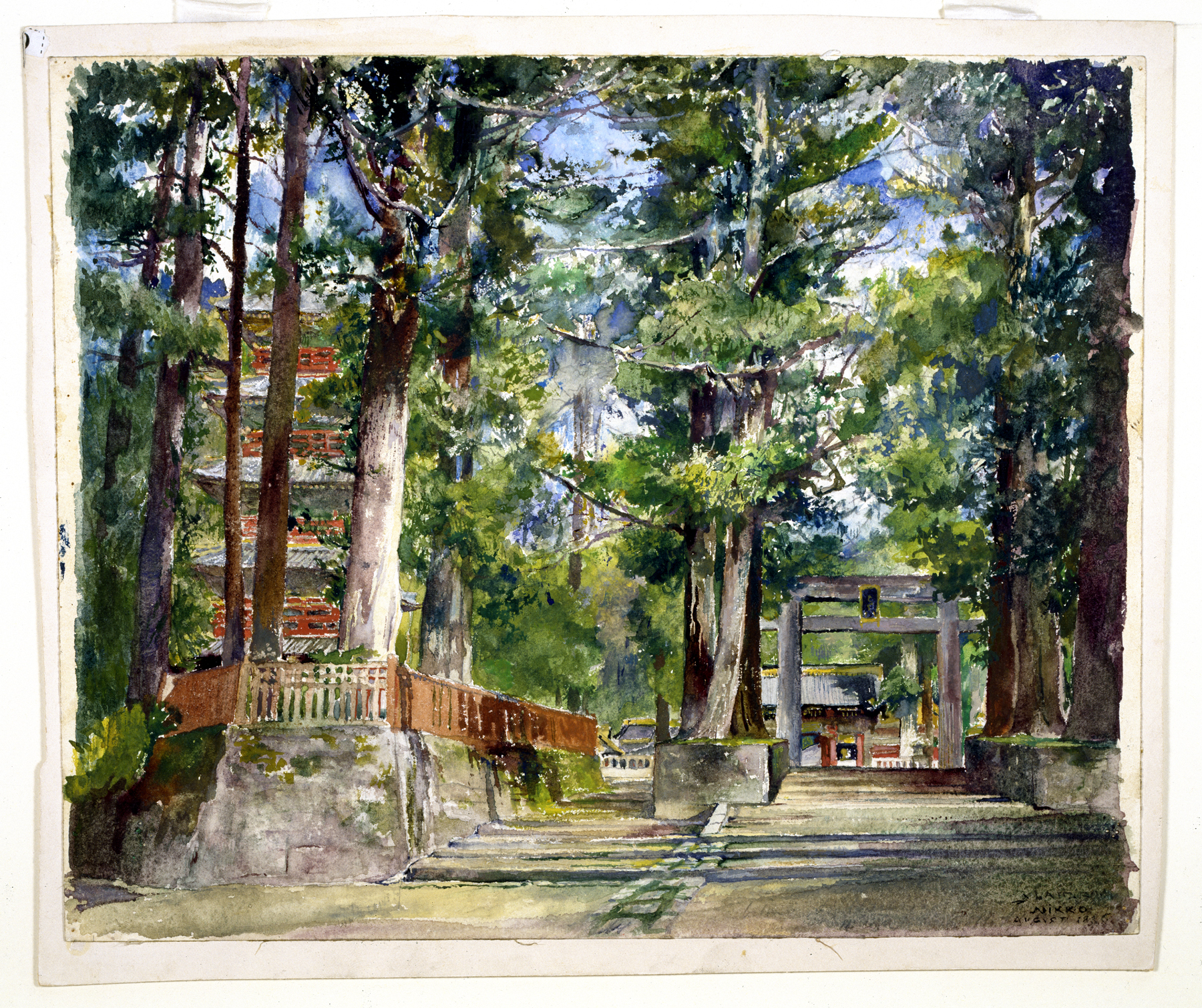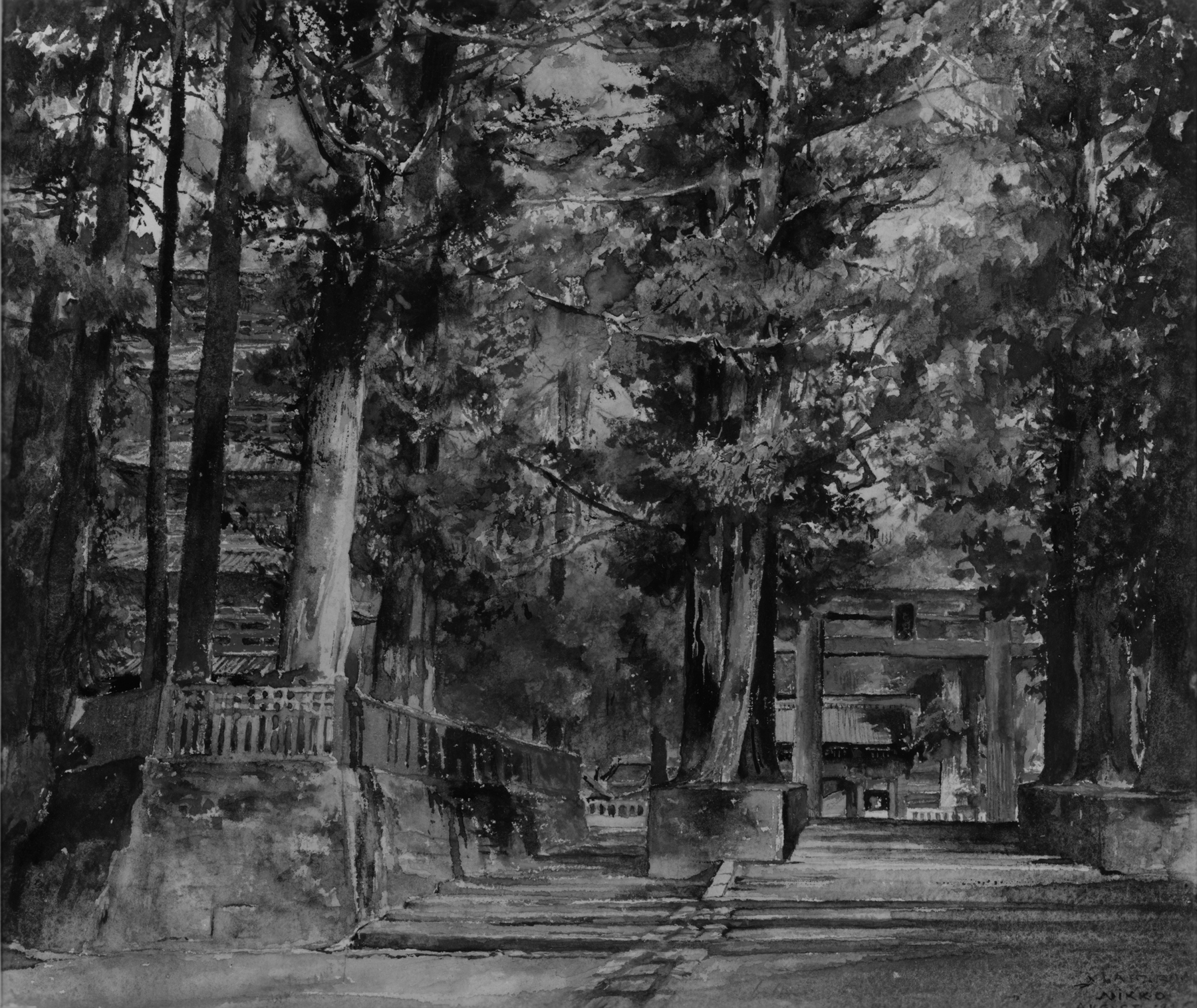Avenue to the Temple of Iyeyasa, Nikko. Mid-day Sun.
(18th and 19th Centuries )
John La Farge traveled to Japan and the South Seas with the historian Henry Adams in the 1880s. During a six-week stay in Japan, La Farge stayed in Nikko, a Tokugwana mortunary temple town 145 kilometers nothwest of Tokyo, at the homes of Boston "japanophiles" and recent converts to Buddhism, William Sturgis Bigelow and Ernest Francisco Fenollosa. On this trip, La Farge painted this watercolor, showing the mortuary gateway, leading into the temple complex of Emperor Iyeyasu (1543-1616). This is one of the few works La Farge brought to completion on the trip; the majority of works with Nikko subject matter were completed between 1887 and 1889 when he was reworking his journals and preparing illustrations for travel articles published in "Century Magazine" between 1890 and 1893. However, he may have used a photograph purchased by Adams as a memory-aid in completing this work (see James L. Yarnall, "Recreation and Idleness: The Pacific Travels of John La Farge," 1998, p. 25, fig. 34).
Inscription
Provenance
Provenance (from the French provenir, 'to come from/forth') is the chronology of the ownership, custody, or location of a historical object. Learn more about provenance at the Walters.
William Macbeth, New York; purchased by Henry Walters, New York, December 1907; by bequest to Walters Art Museum, 1931.
Exhibitions
| 2014 | American Artists Abroad: Works from the Permanent Collection . The Walters Art Museum, Baltimore. |
Measurements
H: 9 7/16 x W: 11 13/16 in. (24 x 30 cm); Mat H: 14 1/4 × W: 19 1/4 in. (36.2 × 48.9 cm)
Credit Line
Acquired by Henry Walters, 1907
Location in Museum
Not on view
Accession Number
In libraries, galleries, museums, and archives, an accession number is a unique identifier assigned to each object in the collection.
In libraries, galleries, museums, and archives, an accession number is a unique identifier assigned to each object in the collection.
37.917




